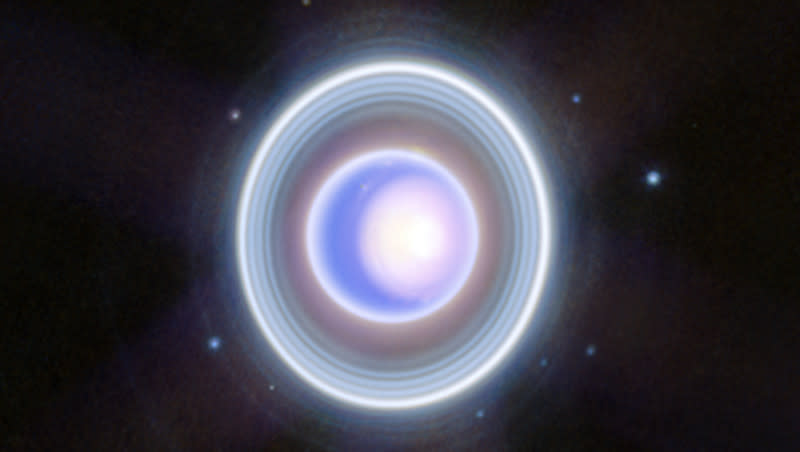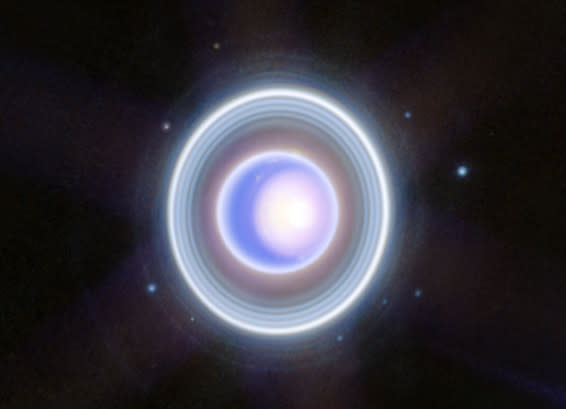Webb space telescope captures captivating images of Uranus

A newly-captured image of Uranus shows off the planet’s bright rings — and a rare look at a seasonal polar cap — just in time for the holidays.
NASA is “ringing” in the holidays with new infrared images of the icy ringed planet captured by the James Webb Space Telescope, according to a press release on Monday.
“When Voyager 2 flew past Uranus in 1986, the planet appeared to be a nearly featureless, solid blue ball,” NASA said. “Now, Webb shows us an infrared view that is much more dynamic and intriguing.”
Seen here by Webb, ice giant Uranus is a dynamic world with rings, moons, storms, extreme seasons, and more. Webb’s sensitivity has even captured the close-in Zeta ring, faint, diffuse, and elusive. https://t.co/T85e7JHwrm pic.twitter.com/R38XPfx7uv
— NASA Webb Telescope (@NASAWebb) December 18, 2023
Earlier this year, the Webb Telescope captured a similar image of the seventh planet. But, with more wavelength coverage, the new images give a more detailed look of the planet.
The new images are a spectacle of moons, rings — including a rare look at the dimly-lit Zeta ring closest to the planet — and other meteorological features.
Related
“One of the most striking of these is the planet’s seasonal north polar cloud cap,” according to NASA. “Compared to the Webb image from earlier this year, some details of the cap are easier to see in these newer images. These include the bright, white, inner cap and the dark lane in the bottom of the polar cap, toward the lower latitudes.”
See the image below for a look at Uranus pictured earlier this year compared to the newer image:



